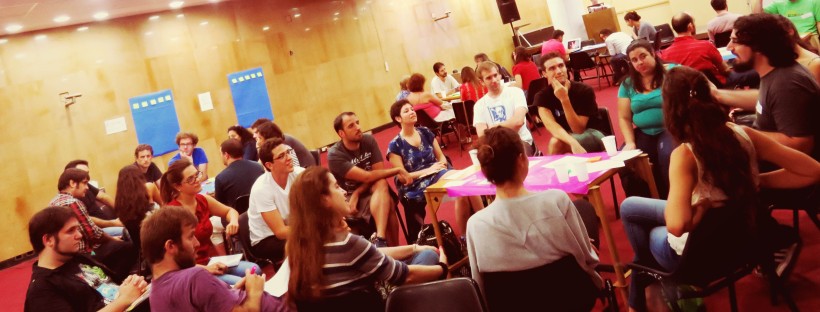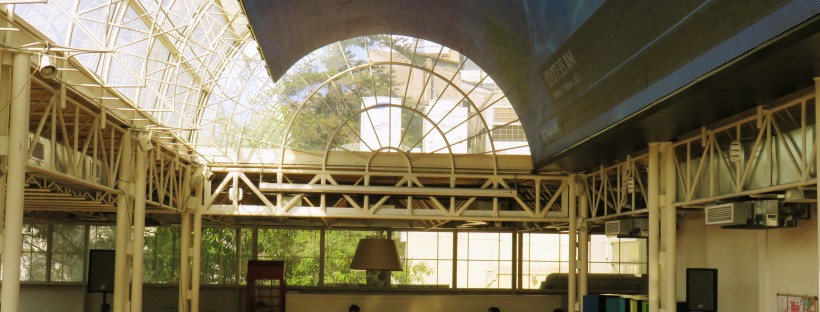Last month our project progressed and move to Israel. We visited the land of the milk and honey in mid May, and we are super excited about what we found. However, we still have some catch up to do from our South American expedition. In the next three posts we will share some of our findings regarding the three countries we visited – Chile, Argentina and Uruguay, and will lay the road toward a completely different region and politics. The first post of the three will focus on Argentina and will bring some of main findings from our research there regarding innovation.
Government and Politics
When it comes to open government data, Argentina is lagging behind other countries in the region. It is currently ranked in the 48th place on Open Knowledge Global Open Data Index. Moreover, ongoing efforts to release more data at the national level appear stalled. While we were in Argentina we attended a roundtable meeting of government and civil society which was suppose to create an action plan for an Open Government Partnership. However, since we came back, we were saddened to hear that the action plan was postponed and now is delayed.
Instead, it is at other levels of government where the release and use of open data is more widespread, especially in the case of the capital city, Buenos Aires.In 2007, a new mayor, Mauricio Macri, was elected. Macri’s election brought a new opportunity for the city of Buenos Aires, and a new open government data directive started to develop. From our visit to the City of Buenos Aires’ Open Data Team, we were impressed by how committed the local government is to improving the publishing and use of open data. Besides having a comprehensive open data portal, the government see themselves as part of the community. This is particularly significant given the importance of communities in developing open data innovation that we’ve noted previously. From the perspective of the city government, there is a need for a shift in mindset when it comes to re-use of open data – there is a need for constant dialogue between the data consumers – civil society, businesses and government offices themselves – in order to create productive flows of data itself and best practices in using it. We were impressed from our interviews that other open data stakeholders in the city feel the same, and share our sense the city government sits as part of, rather than outside of, the community.
The Open Data team explained to us what they saw as three core purposes of open government data: creating transparency, achieving compliance with public services, and to provide additional economic value. Crucially, these objectives are not entirely concurrent; rather, the team explained how establishing greater transparency was the first aim – great strides have already been made here – while true economic value is a longer-term aim, and work in this area is just getting started, for example with a new policy of city procurement, which will allow new businesses to apply for a tender and promote more applications.
The city government’s progressive attitude to opening data was in contrast to the comparative lack of movement in this area at the national level. This point of difference could be productive, however. While different levels of government may deal with different types of data, the hope might be that if citizens see the benefits of open data at a city level, the clamour for more releases of data at the national level may grow.
Media
Another sector that caught our eyes in Argentina was the media, and here we found two main actors. The first was the Argentine branch of Hacks/Hackers, a group which allows journalists and hackers to create solutions to show and explain data easily to the public. The Argentine branch, we were proudly informed, is the largest outside the U.S., and the enthusiasm and activity was palpable in our interviews with some of the group’s leaders. The group organises a Media Party every year in which other data journalist, activist and hackers come together to create quality data journalism as well as useful apps such as Hackdash – which helps to bring the community together and to set goals and tasks for the group’s hackathons.
Alongside innovative local initiatives such as this, we also found a great drive amongst sections of the traditional media to use open data. La Nación, a leading national newspaper,, has pioneered innovative, useful, and frankly beautiful and useful uses of open data in their journalism. The La Nacion Data team is led by highly motivated journalists and technical specialists (most of whom are women) who are working around the clock to make compelling stories from whatever data they can get their hands on. As part of their wider outreach efforts, La Nacion is also promoting data journalism in local universities and is very much part of the open data community themselves. They even publish data on their own open data catalog, in which other members of the public can analyse and use for their use. One popular dataset tries to predict inflation, which fills an important need since the government’s national statistics office itself does not supply this information itself.
Both Hacks/Hackers and La Nacion are filling a vacuum opened up by the absence of national government efforts in this area, scraping and curating their own datasets, for their own use in order to inform citizens. Yet the battle is ongoing, as sometimes these initiatives unintentionally create a catch-22 situation. Activists and journalists will often scrape data from government websites and create a lasting open database which is machine readableand create a database, just to notice later that the government has changed, for example, the aggregation level, so that the data can not be shown to the public and individuals patterns cannot be detected. Alternatively, sometimes the whole data collection is stopped at once.
Yet these efforts only serve as a catalyst for more work on the part of activists, hackers and journalists, who try and find new ways to uncover and present the data, creating a cat-and-mouse game in which the more the government tries to hide, the more activists will try to reveal. As such, it’s the very lack of data at the national level – and ongoing attempts to limit what is already available – which, at least in part, creates the rich environment of innovation in Argentina (with more than 50 different initiatives at the last count). Looking ahead, the key question is: will the community be able to keep doing more innovation with less data? Or will a more thorough change be needed at the national government level? In the meantime, our experiences in Argentina suggested that, at least to a certain extent, when it comes to innovative uses of open government data, less can sometimes be more.












